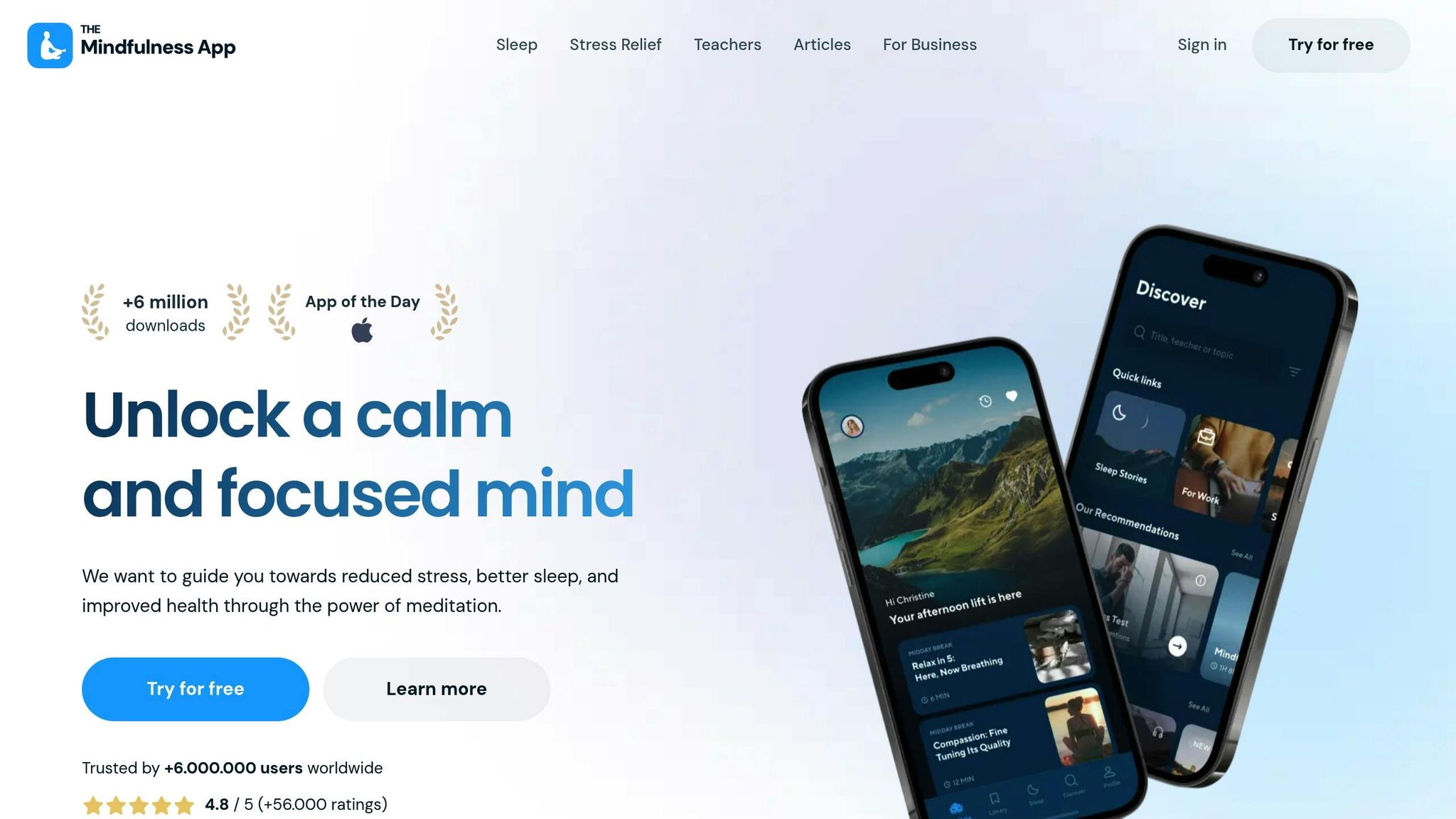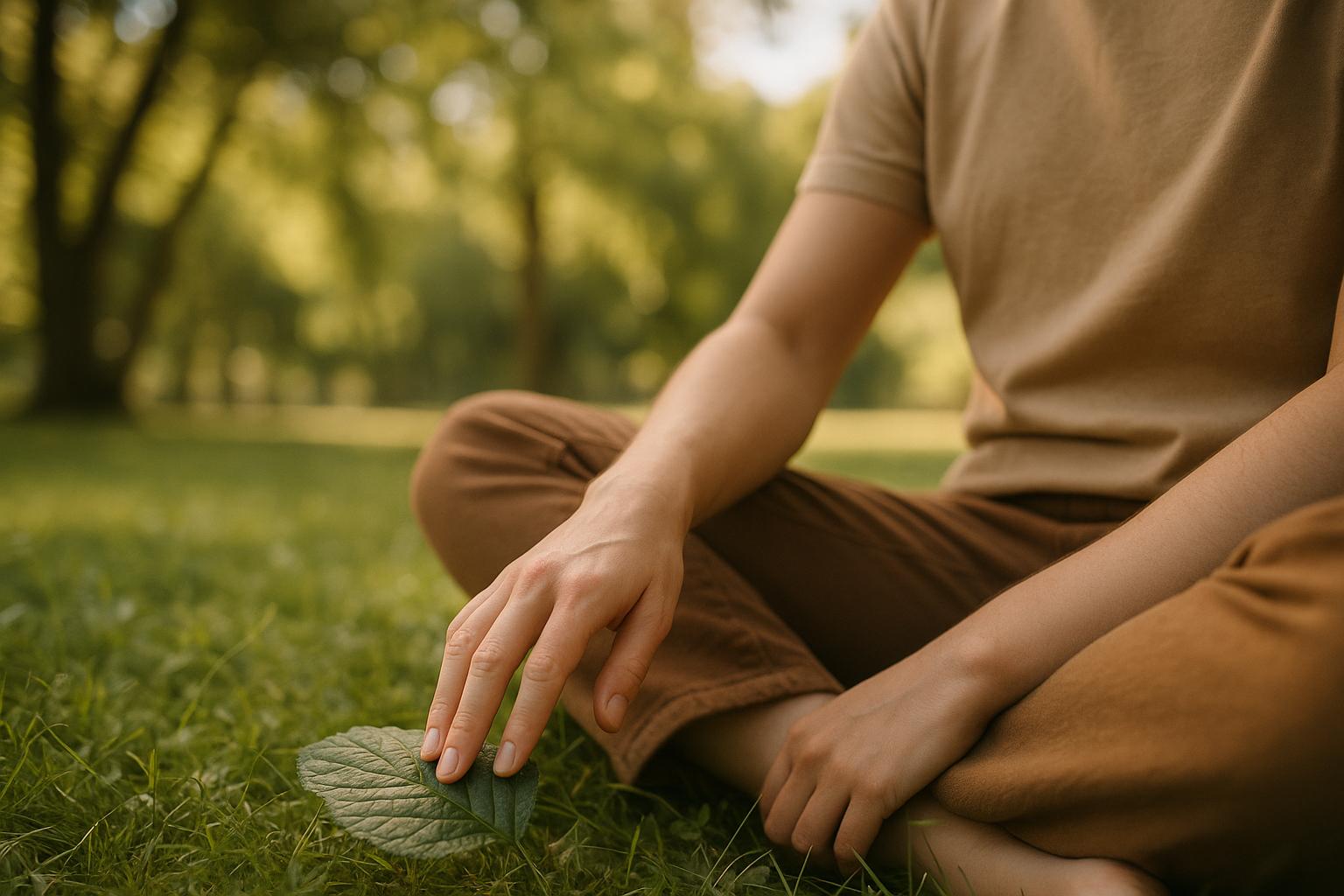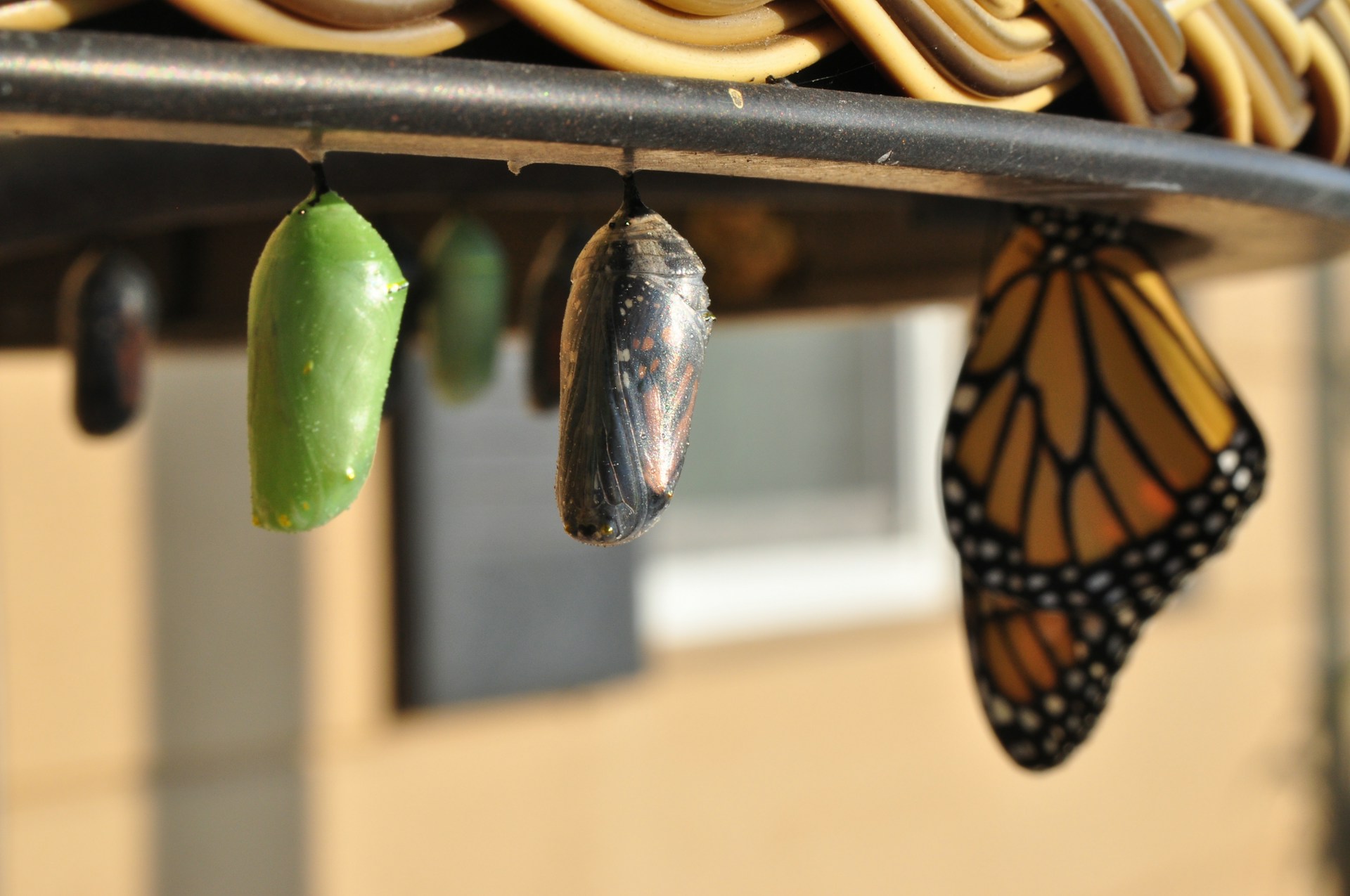Mindfulness is a simple way to reduce stress, improve focus, and enhance emotional well-being. It’s about being fully present in the moment without judgment. Even a few minutes a day can make a difference. Here’s how to get started:
- Begin small: Start with 1–5 minutes of mindful breathing or observing your surroundings.
- Stay consistent: Pick a time that works for you - morning, lunch break, or before bed - and stick to it.
- Incorporate mindfulness into daily tasks: Focus on sensations while eating, walking, or cleaning.
- Use simple techniques: Try mindful breathing (focus on your breath) or body scan meditation (notice sensations in your body).
- Be patient with yourself: Minds wander - gently bring your focus back without judgment.
For extra support, tools like The Mindfulness App offer guided meditations, reminders, and progress tracking. Start today with just one mindful moment - your future self will thank you.
What Mindfulness Is and How It Helps
What is Mindfulness?
Mindfulness is like pressing pause on the chaos of daily life. At its essence, it’s about giving your full attention to the present moment without any judgment. Contrary to popular belief, mindfulness isn’t about clearing your mind of thoughts. Instead, it’s about noticing what’s happening - your thoughts, emotions, and surroundings - without trying to change or critique them.
"Mindfulness is observing instead of engaging with thoughts and emotions - noticing without judging or evaluating."
- Alexa Bonacquisti, PhD, PMH-C, assistant professor in PCOM's Clinical PsyD program
What sets mindfulness apart is its emphasis on awareness. It’s not about fixing or avoiding your experiences but simply recognizing them. For example, if you catch yourself feeling nervous about an upcoming presentation or notice your mind wandering, mindfulness encourages you to observe those feelings with curiosity rather than self-judgment.
This practice of nonjudgmental awareness does more than just ground you in the moment - it also brings several measurable benefits.
Main Benefits of Mindfulness
Mindfulness has a powerful impact on both your mental and physical well-being. Here are some of the most notable benefits backed by research:
Stress Reduction That Works
Mindfulness-based stress reduction techniques have been shown to lower cortisol levels, leading to real, measurable improvements in how your body handles stress.
Improved Focus and Memory
Even a few weeks of mindfulness training can enhance working memory and sharpen attention. This means better performance at work, school, or wherever focus is essential.
Emotional Stability and Resilience
By strengthening the prefrontal cortex - the part of the brain responsible for emotional regulation - mindfulness helps you maintain steadier emotions and react less impulsively. Research also shows that regular mindfulness practice can ease symptoms of anxiety and depression, making it easier to navigate life’s challenges thoughtfully.
Better Sleep
Mindfulness is particularly effective for improving sleep quality, especially for those dealing with insomnia. By quieting racing thoughts, it allows for more restful sleep.
Relief from Pain and Health Issues
A comprehensive meta-analysis found that mindfulness can reduce anxiety, depression, and even physical pain. This makes it a valuable addition to traditional medical treatments for various conditions.
These benefits often create a ripple effect: reduced stress leads to better sleep, improved focus, and greater emotional balance. Over time, these changes can significantly enhance your overall well-being.
3 easy mindfulness techniques | psychologist explains
How to Start Your Daily Mindfulness Practice
Starting a daily mindfulness practice doesn’t have to feel overwhelming. Think of it as learning a new skill - like playing an instrument. You wouldn’t expect to perform a symphony on your first day, right? With consistent effort, even simple mindfulness exercises can become a natural part of your routine, offering benefits for your overall well-being.
Start Small: Easy Practices for Beginners
Begin with just 1–5 minutes a day. Even short sessions can help improve your mood and sharpen your focus. Associate Professor Amishi Jha compares this to flossing:
"It's like flossing. If you can commit to flossing one tooth, your dental health will improve. Why? Because nobody flosses one tooth."
Even a single mindful minute can help you build the habit. Try weaving mindfulness into your daily activities: take a few slow, intentional breaths while sitting at your desk, feel the warmth of your coffee cup in your hands, or spend a moment watching the clouds during your lunch break. These small moments add up.
Build a Routine That Works for You
Consistency is the secret ingredient. Mindfulness expert Michelle DuVal emphasizes this point:
"The #1 struggle most people have with meditation is staying consistent, and yet consistency is the biggest factor in living a more mindful, less stressful life."
Pick a time that fits naturally into your schedule. Many people prefer mornings because the mind is quieter and there are fewer distractions, but any time that works for you - during lunch, after work, or before bed - is fine. What matters is making it a regular part of your day.
To help establish the habit, create a dedicated space for your practice and use reminders like phone alarms, calendar notifications, or sticky notes. Over time, these cues will make mindfulness feel as automatic as brushing your teeth.
Practice Patience and Self-Compassion
As you develop your mindfulness routine, be kind to yourself. It’s completely normal for your mind to wander - whether you’re thinking about your to-do list, an upcoming meeting, or what you had for dinner last night. When this happens, simply notice the distraction without judgment and gently bring your focus back to the present moment. This act of returning your attention is the essence of mindfulness.
Mindfulness isn’t about achieving a perfect state of calm. It’s about being present with whatever comes up - whether your mind feels peaceful or restless. Treat distractions as opportunities to practice, and set realistic expectations. Progress may not always be straightforward, but every time you return to the present, you’re strengthening your practice.
Easy Mindfulness Techniques to Try
Let’s build on the basics with a few simple techniques to weave mindfulness into your everyday life. These practices don’t require any special tools - just a few minutes and a willingness to focus on the present.
Mindful Breathing
Mindful breathing is one of the easiest ways to ground yourself in the moment. Wellness expert Jamie Price explains:
"The breath is such a great anchor [to the present] because it's with you and happening naturally all the time. If you get in the habit of using your breath as an anchor, and become more aware of your thoughts and emotions, you can stop them before they gain momentum in a way that contributes to stress or anxiety."
Here’s a quick two-minute exercise to get started: Sit, stand, or lie down in a comfortable position. You can keep your eyes open with a soft gaze or close them if that feels better. Start with a deep breath: inhale for 3 seconds, hold for 2, and exhale for 4. Then, let your breathing return to its natural rhythm and simply observe - notice the rise and fall of your chest or the sensation of air moving through your nostrils.
Licensed professional counselor Alistair Hawkes emphasizes the importance of this practice, saying, "Breath work is the foundation for stress management." To make it a habit, place sticky notes with the word “breathe” in spots you’ll see throughout your day, like your desk or bathroom mirror.
Once you’re comfortable with mindful breathing, you might want to explore body scan meditation to deepen your awareness.
Body Scan Meditation
A body scan meditation is a great way to reconnect with your body and notice areas of tension or discomfort you might otherwise ignore. Studies have shown that practicing body scans for eight weeks can lower cortisol levels, the hormone linked to stress.
Here’s how to try it: Find a quiet space where you can sit or lie down comfortably. Close your eyes, take a few deep breaths, and bring your attention to your feet. Notice any sensations - warmth, tingling, tension - without trying to change them. Slowly move your focus upward, scanning each part of your body: ankles, calves, knees, thighs, hips, and so on. If you sense tension, imagine it releasing with each exhale. Acknowledge any thoughts or discomfort that arise, but don’t judge them.
Elizabeth Scott, PhD, highlights the benefits of this practice:
"Body scan meditation helps rebuild this connection. Instead of worrying about the future or ruminating on the past, scanning the body forces us to be present at the moment."
Even a short body scan can help you identify where you’re holding stress and start letting it go.
For a more hands-on approach to mindfulness, try incorporating awareness into your daily routines.
Mindful Moments in Daily Activities
Did you know that about 95% of our behavior runs on autopilot? Mindfulness can help you break free from these automatic patterns by turning everyday tasks into opportunities for awareness.
Here are a few ideas to bring mindfulness into your day:
- When your phone rings, pause and take a deep breath before answering.
- During meals, pause between bites to savor the flavors and textures of your food.
- While brushing your teeth, focus on the sensation of the bristles against your gums and the taste of the toothpaste.
- Start your day mindfully: before getting out of bed, sit comfortably, take three deep breaths, and set a simple intention for the day.
- Even driving can become a mindfulness practice - breathe deeply at red lights, check in with your emotions, and extend kindness to yourself and other drivers.
These small, mindful moments can make a big difference. Each time you pause and focus on the present, you’re strengthening your ability to respond thoughtfully rather than react impulsively to life’s challenges.
sbb-itb-bea8dce
Adding Mindfulness to Your Daily Life
Incorporating mindfulness into your daily routine doesn’t have to feel like an extra chore. Instead, it’s about finding ways to bring awareness and presence into the activities you’re already doing. By shifting your mindset, even the most ordinary moments can become opportunities for mindfulness.
Mindfulness During Daily Tasks
Everyday tasks are perfect for practicing mindfulness. The trick is to step out of autopilot mode and be fully present in whatever you’re doing. This simple shift not only helps lower stress but also reinforces the positive effects of mindfulness over time.
Mindful eating is a great place to start. Take a moment before your first bite to notice the colors, textures, and smells of your food. Then, eat slowly, savoring each bite. Put away distractions like your phone or TV to fully immerse yourself in the sensory experience of eating.
Mindful walking can turn a casual stroll into a moving meditation. Walk at a slower pace, paying attention to how your feet feel as they lift and touch the ground. Match your steps to your breath - take two steps as you inhale and two as you exhale. Instead of judging your surroundings, simply observe them as they are.
"Walking meditations create a rhythm for mindfulness in motion. They anchor you in the moment and help integrate mindfulness into everyday activities."
- Stephen Davies, Insight Timer teacher
Mindful cleaning is another way to bring awareness into your day. Focus on the repetitive motions involved in tasks like sweeping, wiping, or washing dishes. Notice the sounds, smells, and physical sensations as you clean. It’s a chance to turn a routine chore into a calming, meditative practice.
Set Daily Goals and Check Your Progress
Adding structure to your mindfulness practice can help make it stick. Start each day by setting a simple intention, like “I’ll pause and take three deep breaths before responding to emails” or “I’ll eat lunch without multitasking.”
The best time for intention-setting is in the morning, before the day’s distractions take over. After waking up, sit quietly for a moment, take a few deep breaths, and think about how you want to approach your day. Writing your intention down can make it feel more concrete.
Throughout the day, check in with yourself to see how you’re doing. Emily Hornsby, NCHPAD Mindfulness Curriculum Coordinator, explains:
"Mindfulness is paying attention to what is going on in and around you moment by moment without judgment."
If you start feeling stressed, try the STOP technique: stop what you’re doing, take a breath, observe your surroundings and emotions, and then proceed with intention. Another method is the Feet First approach - when tension builds, focus on your breathing and feel the sensation of your feet on the ground.
Set reminders on your phone or use sticky notes in your workspace to prompt these mindful moments. Celebrate small successes - every time you pause and breathe, you’re strengthening your mindfulness practice.
Common Problems and Solutions
Starting a mindfulness practice isn’t always smooth sailing, but common challenges can be overcome with the right strategies.
One of the biggest concerns is time. Many people feel they’re too busy to add mindfulness to their day. The solution? Start small. Dedicate just a few minutes to mindfulness, and weave it into tasks you already do, like your commute or household chores.
Mind wandering and overthinking are also common frustrations. When this happens, Elisa Silbert, a C-Suite Executive in Welltech industries, suggests:
"When you catch yourself overthinking, mentally label it as 'thinking' and gently let go of the thought, returning your attention to the present moment..."
Rather than battling your thoughts, simply acknowledge them and refocus on the present.
Inconsistency often stems from setting expectations that are too high. Build a routine that fits your actual lifestyle, not an idealized version of it. Sharing your mindfulness journey with a friend or family member can also help you stay accountable. And remember, self-compassion is key - be kind to yourself if you miss a day or struggle to focus.
If boredom or restlessness sets in, it might be time to mix things up. Try exploring different mindfulness techniques. Some days, breathing exercises might feel right; other days, walking meditations or mindful cleaning could provide a fresh perspective. The variety keeps your practice engaging and adaptable to your needs.
How The Mindfulness App Can Help You

Building a mindfulness practice doesn’t have to feel overwhelming. That’s where The Mindfulness App steps in, making it easier to incorporate mindfulness into your daily routine. Whether you’re just starting out or have been practicing for years, this app offers tools designed to meet you where you are.
What The Mindfulness App Offers
The Mindfulness App features over 500 guided meditations, sleep stories, and courses led by expert instructors. With more than 5 million downloads and an impressive 4.8-star rating from over 7,200 users on the App Store, it’s clear that this app has helped many people establish lasting mindfulness habits.
One of the app’s strengths is its flexibility. You can choose meditation sessions ranging from 3 to 99 minutes to fit your schedule. Prefer a peaceful background? Add soothing sounds like rain, ocean waves, or a forest breeze. Whether you’re squeezing in a quick breathing exercise during a busy day or settling in for a longer session at night, the app adjusts to your needs.
If you’re new to mindfulness, the 5-day introduction course is a great place to start. It provides a structured approach to learning basic techniques, helping you build a strong foundation before exploring more advanced content.
Traveling or dealing with spotty internet? The premium subscription includes offline access, allowing you to download your favorite meditations and enjoy them anywhere - whether you’re on a flight or simply avoiding online distractions. Plus, with support for 12 languages and regular updates featuring new meditations and instructors, the app keeps your practice fresh and engaging.
Using the App for Daily Practice
Consistency is the cornerstone of any mindfulness practice, and The Mindfulness App offers tools to help you stay on track. You can set daily reminders or intermittent cues to take a moment, breathe, and reconnect with the present. These prompts can anchor mindfulness into your routine, whether you prefer meditating in the morning, during a lunch break, or before bed.
The app also tracks your progress, providing personalized statistics like meditation streaks, total minutes practiced, and your favorite sessions. This data can help you stay motivated and recognize patterns in your practice over time. For Apple users, integration with Apple Health and Apple Watch makes it even more convenient - you can start sessions right from your watch and automatically log your meditation time alongside other wellness activities.
"Easy to use and navigate. I'm a beginner and feel calmer and less anxious 2 weeks into using this app. Calm instruction with easy to listen to tones and voices. Feeling a little more mindful everyday." - Oscar E.
Free Trial and Premium Access
Not sure if The Mindfulness App is for you? Take advantage of the 14-day free trial to explore everything it offers. This trial gives you full access to the premium library, so you can try different meditation styles and see how the app fits into your routine.
After the trial, you can choose between a monthly plan for $9.99 or an annual plan for $79.99 (which breaks down to $6.67 per month, offering better value for long-term users). Premium subscribers gain access to the entire content library, offline downloads, and extra customization options.
A survey of 1,000 users found that regular use of The Mindfulness App led to reduced stress, better focus, and improved sleep - benefits that many feel are worth the investment in their mental health.
"It's amazing how easy it is to actually meditate and even more amazing to see the positive differences it can bring. Thank you for teaching me how to meditate and how to focus and bring my concentration back to where it needs to be when it starts to wander." - Lynn S.
With its expert-led guidance, flexible scheduling, progress tracking, and offline capabilities, The Mindfulness App is an excellent companion for anyone looking to build and maintain a meaningful mindfulness practice.
Start Your Mindfulness Practice Today
Kick off your mindfulness journey with a single, intentional breath and a promise to show up for yourself every day. It's a small step, but it can lead to meaningful change.
Keep it simple and stay consistent. Pick one straightforward technique from this guide - whether it's mindful breathing, a body scan, or setting a daily intention. As Sadie Bingham aptly puts it, "It's important to meditate daily because you're cultivating a habit". The focus should be on creating a routine, not achieving perfection. Over time, consistency will make all the difference.
Choose comfort over rigidity. Your posture should support your practice, not become a distraction. Whether you sit in a chair, lie down, or even stand, the key is finding a position that feels sustainable and natural.
Use a sensory anchor and welcome a wandering mind. Ground yourself by focusing on your breath, a sound, or any sensation in the present moment. When your mind inevitably drifts, gently guide it back to your anchor without any self-criticism. This redirection is what strengthens your mindfulness over time.
As Jon Kabat-Zinn explains, "Mindfulness can slow it down so that we actually are capable of driving our own vehicle, so to speak, and living optimal lives of well-being that are not merely self-centered to optimize things for ourselves".
Modern tools can make it even easier to stick with your practice. Let technology lend a hand. Apps like The Mindfulness App offer features like guided meditations, courses, and progress tracking. With a 14-day free trial and built-in reminders, it’s a simple way to weave mindfulness into your daily routine.
Take a moment today - just 60 seconds - to focus on your breath. Set a timer, notice when your thoughts wander, and gently bring your attention back. That single minute is all it takes to start building a new habit. Your future self will be grateful you did.
FAQs
How can I stay motivated to practice mindfulness daily, even with a busy schedule?
Staying motivated to incorporate mindfulness into your daily routine doesn’t have to be complicated. Start with just 2–5 minutes a day. Whether it’s deep breathing or a short guided meditation, keeping it brief can help you build a habit without feeling overwhelmed. The key? Consistency matters more than the length of your sessions.
Find ways to weave mindfulness into what you already do. Savor the moment during your morning coffee by practicing mindful breathing. Pay attention to each step when you’re walking. Or, use work breaks to pause, reflect, and reset. These small shifts can make mindfulness feel like a natural part of your day.
And don’t forget - progress takes time. Be patient with yourself, and focus on showing up rather than striving for perfection. Celebrate the little victories and let mindfulness grow into something that supports and enriches your everyday life.
What are common challenges when starting a mindfulness practice, and how can you overcome them?
Starting a mindfulness practice can seem tough at first. It’s common to deal with hurdles like restlessness, impatience, overthinking, or feeling like you just don’t have enough time. These feelings are completely normal and part of the journey.
To make it easier, begin with short and simple sessions - even 2–5 minutes a day can make a difference. When your mind inevitably starts to wander, gently guide your focus back without being hard on yourself. You can also weave mindfulness into your daily life - try focusing on your breath while waiting in line or reflecting on things you’re grateful for before going to bed. The most important thing? Give yourself grace. Progress doesn’t happen overnight, but staying consistent will pay off.
How does practicing mindfulness help with emotional stability and resilience, and how can you tell if you’re making progress?
Mindfulness enhances emotional stability and resilience by teaching you how to handle stress, regulate emotions, and become more self-aware. When practiced consistently, mindfulness helps you face challenges with a sense of calm and clarity, rather than reacting on impulse.
You might notice progress when you feel more emotionally balanced, manage stress more effectively, and exercise greater self-control in your reactions. Over time, mindfulness can lead to a more positive outlook and a deeper sense of inner peace, showcasing its lasting influence on your mental and emotional well-being.






